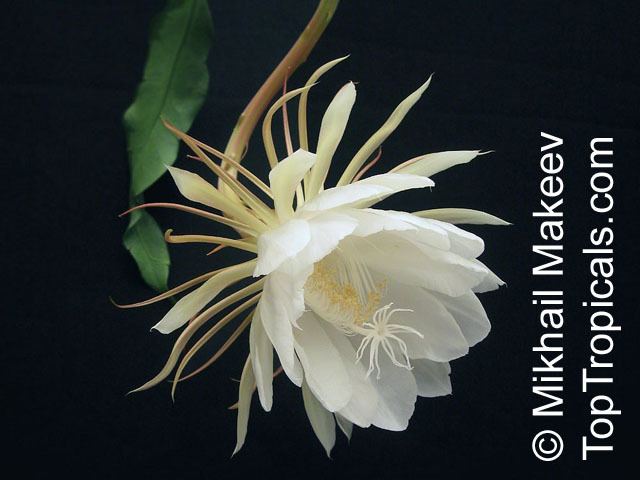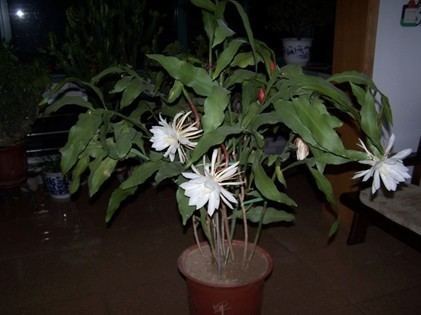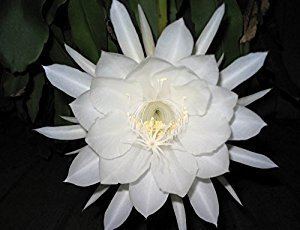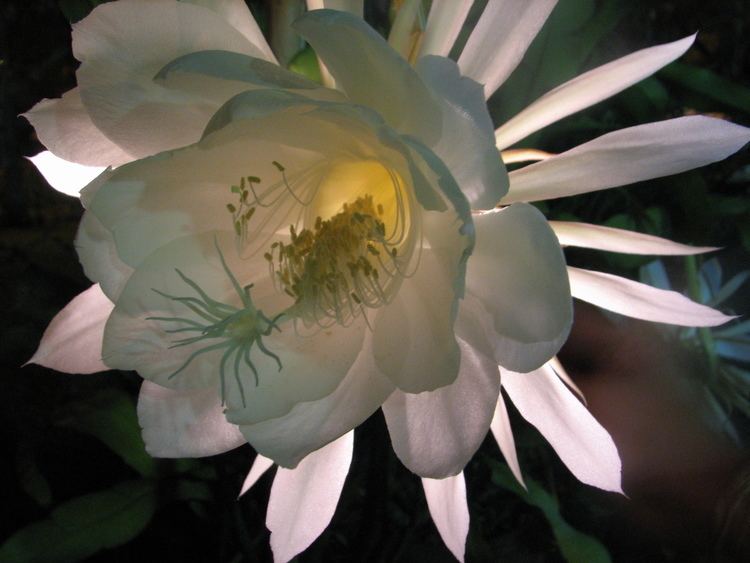Genus Epiphyllum Higher classification Epiphyllum | ||
 | ||
Similar Epiphyllum, cactus, Selenicereus grandiflorus, Disocactus, Daisy anemones | ||
Queen of the night epiphyllum oxypetalum 2010
Epiphyllum oxypetalum (Dutchman's pipe cactus or queen of the night) is a species of cactus and one of the most cultivated species in the genus. E. oxypetalum blooms rarely and only at night, and its flowers wilt before dawn. Though it is sometimes referred to as a nightblooming cereus, it is not closely related to any of the species in the tribe Cereeae, such as Selenicereus, that are more commonly known as nightblooming cereus. All Cereus species bloom at night and are terrestrial plants; all Epiphyllum species are usually epiphytic.
Contents
- Queen of the night epiphyllum oxypetalum 2010
- Epiphyllum oxypetalum brahma kamalam
- Range
- Etymology
- Vernacular names
- Systematics
- Cultivation
- Description
- References

Epiphyllum oxypetalum brahma kamalam
Range

Epiphyllum oxypetalum is native to Southern Mexico and to extensive areas of South America. It is widely cultivated, escapes from cultivation in tropical areas, and has become naturalised in China.
Etymology
Oxypetalum (Latin) = with acute petals
Vernacular names

In India it is called Brahma Kamalam, named after the Hindu god of creation, Lord Brahma. It is believed that the wishes of people who pray to God while the flower is blooming will be fulfilled.

The Chinese chengyu (four character idiom) 曇花一現 (tan hua yi xian) use this flower (tan-hua; 曇花) to describe someone who has an impressive but very brief moment of glory, like a "flash in a pan," since a Epiphyllum oxypetalum plant might bloom only once a year over a few days. Therefore, someone described as "曇花一現" is generally understood to be a person who shows off or unexpectedly gains some achievement and is thought to be an exception or only lucky. The flower also has a rich history in Japan, where it is known as the 月下美人 (Gekka Bijin) or "Beauty under the Moon".
Systematics

This species is closely related to E. thomasianum and E. pumilum, but quite distinct from them. In 1909, C. A. Purpus collected a slightly different type in St. Ana, Orizaba, Mexico. It has carmine red outer petals and the flowers have an unpleasant smell, rather than being fragrant. It was originally named Phyllocactus purpusii, but is now included within this species.
Cultivation

Epiphyllum oxypetalum is an easily cultivated, fast growing Epiphyllum. It flowers in late spring through late summer; large specimens can produce several crops of flowers in one season. This is the most commonly grown of the Epiphyllum species.
Description
Stems are erect, ascending, scandent, or sprawling and profusely branched. Primary stems are terete, up through 6 m long, flattened laterally, and ligneous at their bases. Secondary stems are flat, elliptic-acuminate, up through 30 cm x 10–12 cm. Stem margins are shallowly through deeply crenate and ± undulate. Flowers are produced from flattened portions, are up through 30 cm long and 17 cm wide, nocturnal, and very fragrant. The principal odor component in the aroma is benzyl salicylate. Pericarpels are nude, slightly angled, and green. Bracteoles are short and narrow up through ca. 10 mm long. Receptacles are up through 20 cm long, 1 cm thick, brownish, and arching. Outer tepals are linear, acute, 8–10 cm long, and reddish through amber. Inner tepals are whitish, oblanceolate through oblong, acuminate, up through 8–10 cm long and 2,5 cm wide. Stamens are greenish white or white, slender and weak. Styles are greenish white, pale yellow, or white, 4 mm thick, as long as inner tepals, and with many lobes. Fruit are oblong, up through 12 x 8 cm, purplish red, and angled.
